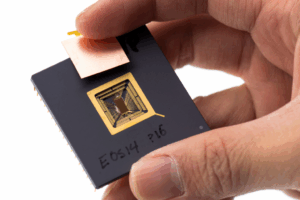Debian 13 “Trixie”: A look at the highlights
Introduction
Last Saturday, August 9, the Debian project released the latest version of the Linux distribution “Debian.” Version 13 is also known as ‘Trixie’ and, like its predecessor “Bookworm,” contains many new features and improvements. Since some credativ employees are also active members of the Debian project, the new version is naturally a special reason for us to take a look at some of its highlights.
Desktop environments up to date
Debian 13 brings desktop environments up to date. For GNOME enthusiasts, there is the latest version, GNOME 48, which offers improved usability and a modern design. Those who prefer the KDE desktop will now be able to use KDE Plasma Desktop 6.3 in Debian 13, which promises a leaner and faster interface. Debian is thus switching to Wayland as the standard.

The brand new Linux kernel 6.12 LTS
At the heart of Debian 13 is the Linux kernel 6.12 LTS (Long-Term Support). This kernel provides improved hardware support and increased performance. It also ensures the long-term stability of the system, which is a decisive factor for many users. Kernel 6.12 is also used in other Linux distributions, including RedHat Enterprise Linux 10.
Official support for RISC-V 64-bit architecture
Debian 13 is the first version to offer official support for the RISC-V architecture. This is an important step for the open source community and enables Debian to run on 64-bit RISC-V hardware. At the same time, support for some older architectures such as “mipsel” and “i386” has been removed from the installation programs in order to focus on newer technologies.

Increased security
Debian is known for its robustness and security. “Trixie” introduces new security features on the “amd64” and “arm64” architectures to better protect the system from attacks such as ROP (Return-Oriented Programming) and COP/JOP (Call/Jump-Oriented Programming) exploits. These features are automatically enabled on compatible hardware.
The /tmp and /var/tmp directories are automatically cleaned up on newly installed systems. The Debian project describes in detail the specifications used to do this and how this behavior can also be enabled on systems updated from Debian 12.
DSA (Digital Signature Algorithm) keys are no longer supported by the OpenSSH packages version 9.8 available in Debian 13 and can no longer be activated by additional parameters. In general, DSA keys should no longer be used or exchanged. If necessary, the ssh1 command from the openssh-client-ssh1 package can still be used.
Conclusion
Debian 13 “Trixie” promises to be a stable, modern, and secure foundation for servers and desktops. With updated desktop environments, a newer kernel, and support for the RISC-V architecture, it is a release that users have been eagerly awaiting. This also marks the start of the development cycle for Debian 14, whose code name will be “Forky.” Debian is thus continuing its tradition of using a character from Toy Story universe.
We are happy to support you
We are happy to assist you in updating your servers from Debian 12 (or older) to Debian 13. Please feel free to contact us.
Furthermore, Debian 13 forms the basis of Proxmox VE version 9 and can therefore serve as the foundation for your future virtualization solution. As an official Proxmox partner, we are happy to assist you in setting up or updating this solution.
| Categories: | Debian News |
|---|---|
| Tags: | debian 13 Trixie |
About the author
Martin Zobel-Helas
Technischer Leiter Betrieb
about the person
Als einer der technischen Leiter unterstützt Martin Zobel-Helas unsere Kunden bei der Konzeption und Integration von Open Source Software in komplexen IT-Infrastrukturen. Martin arbeitet schon seit 2005 bei credativ und übernimmt dort ebenfalls die Rolle des Open Source-Beauftragten. Gleichzeitig ist er ein sehr bekanntes und geschätztes Mitglied der internationalen Debian Community. Seine langjährige Mitarbeit als Entwickler und Sysadmin des Debian-Projektes zeichnen Ihn genauso aus, wie seine Tätigkeit im Vorstand der gemeinnützigen Open Source Organisation „Software in the Public Interest, Inc.“.
